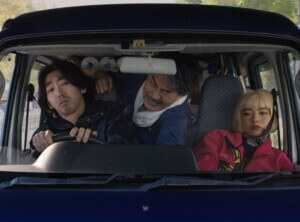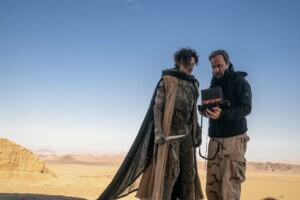Dante Ferretti: Design and Construction for the Cinema
Museum of Modern Art
The Roy and Niuta Titus Galleries and the Film Lobby
Dante Ferretti: Designing for the Big Screen
The Roy and Niuta Titus Theaters
Through February 9, 2014
When you enter the Film Entrance to the Museum of Modern Art at 11 West 53rd Street, you are greeted by two large lions. No, you are not 11 blocks south at the New York Public LIbrary, nor are you in Venice, Italy. You are entering the world of Dante Ferretti, the 70-year old multi–Academy Award–winning art director of films, opera, exhibitions, and even two New York City restaurants, Salumeria Rosi (design inspired by a scene in Federico Fellini’s Satyricon). Large, muscular, physically confident objects dot the floor—the clock-face from Hugo (Martin Scorsese, 2011), Art Deco chandeliers from Salò, or the 120 Days of Sodom (Pier Paolo Pasolini, 1975), and Arcimboldo figures comprised of vegetables, fruits and flowers (Milan World Expo, 2015). But these are actually lightweight, ephemeral objects made of fiberglass and not meant to last beyond the creation of the film or duration of the event. The clock and chandeliers were on the cusp of being tossed when curators Jytte Jensen and Ron Magliozzi salvaged them.
We then descend from the lit ground floor to the darkened subterranean levels where the movie theaters nest and magic happens. Blueprints and models midway down indicate Ferretti’s working practice. Particularly noteworthy are his dividing lines for elements to be built in 3D butt up against a green screen for digitally rendered CGI. As film viewers, we see them seamlessly.
The lowest level features a cinematic labyrinth, which echoes Ferreti’s own proclivities for intricate passageways and mazes, let alone the labyrinth of the mind. It is easy to get turned around in a labyrinth, but as Ferretti is our guide, we can rest assured that we will find our way to the end. This immersive 12-screen video maze is technically ingenious using Gerriet’s EVEN “front and rear” pure white screen fabric with identical distribution of image on both sides. Intentionally, the visitor can see projected images both from the correct orientation as you would seated in a cinema or in front of a monitor, and backwards. Upon seeing the screens for the first time just before the exhibition opening, Ferretti declared they would have to be changed since the material appeared too opaque. But once he saw the projection, he was amazed that the image penetrated to the verso without dimming or distortion. The BenQ MX822st projectors deliver short-throw, bright, sharp contrast images. No matter how many visitors are inside the labyrinth, no shadows are thrown.
Scenes from many of Ferretti’s films are shown, and with the clips clocking in at different lengths you’ll never see the same combination twice. (This is the first time that MoMA insisted that clearances from all actors and guilds be obtained, rather than simply the studios, so it is doubtful that this sort of undertaking will take place again.) Mirrors at the end of the wall seem to extend the labyrinth to infinity. In fact, the original 1939 Titus lobby by Philip Goodwin and Edward Durrell Stone had full-length mirrors [see photo at top].
The walls are lined with paintings, which is how Ferretti starts the process. He paints wide-screen canvases depicting key moments in the film with central perspective, pronounced light sources, grids and catacombs, often in a palette of dark reds and browns. The directors then respond to Ferretti’s concept, whether Fellini, Scorsese, Pasolini, Franco Zeffirelli, Anthony Minghella, Kenneth Branagh, Neil Jordan, Terry Gilliam, Tim Burton, Julie Taymor, Claude Chabrol, David Cronenberg, Jonathan Miller, or the many others for whom he has created worlds of the imagination for their films.
Ferretti divides his output into three categories, which are represented in the screenings of 22 features shown in MoMA’s theaters: the historic “period” films (Pier Paolo Pasolini’s Salò, 1975 and The Aviator, 2004) “fantasy” (Terry Gilliam’s The Adventures of Baron Munchausen, 1988 and Martin Scorsese’s Hugo, 2011) and “contemporary” (Elio Petri’s Todo Modo, 1976 and Scorsese’s Casino, 1995).
What does Ferretti surround himself with in his studio to create these designs? Classic Italian modernism.










